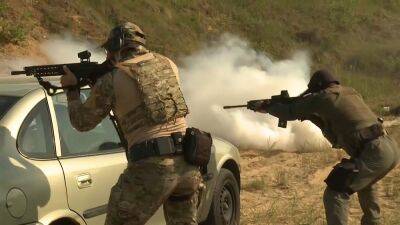Inside the 'Flying Kremlin': What does Russia's 'Doomsday plane' mean for the war in Ukraine?
The "Flying Kremlin," also known as Russia’s "Doomsday plane," was planned to make its first appearance in over a decade at Moscow’s Victory Day parade on Monday.
However, the huge aircraft designed to protect President Vladimir Putin in the event of a nuclear attack noticeably absent due to weather conditions, according to Russian officials, despite being spotted flying low over Moscow in the days prior to the event.
The menacing aircraft, which is the pinnacle of Soviet-era military engineering, was scheduled to be accompanied by two MiG-29s fighter jets as well as Tu-96 "Bear" and Tu-160 "White Swan" bombers, both of which are capable of carrying nuclear warheads.
It’s appearance has raised eyebrows in the international community, seen as being indicative of the rising political tensions between Russia and the West over the former’s invasion of its neighbour.
As the war in Ukraine rages on, it’s been suggested that Putin could be using the plane as a warning message toward NATO and its allies.
In April 2022, Putin condemned weapon supplies to Kyiv from the West, threatening to launch a "lightning fast" response to any nation that intervenes in the Ukraine war.
May 9 has particular importance in Russia as it marks the commemoration of the USSR’s defeat of Nazi Germany in World War II. In recent years, the Kremlin has increasingly used the anniversary to glorify its military and this year’s event has been a flexing of Russia’s nuclear muscle.
In April, Putin made veiled threats about the use of nuclear warheads against countries seen as "interfering" in its "special operation" in Ukraine.
Avril Haines, the US' top intelligence chief, also warned on Tuesday that Putin may turn to nuclear weapons if he sees defeat in Ukraine as a





